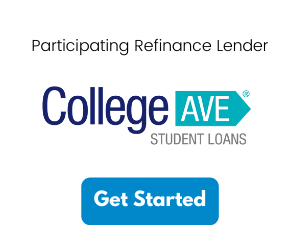History of the Non-Dischargeability of Student Loans
- The Bankruptcy Abuse Prevention and Consumer Protection Act of 2005 (P.L. 109-8) adds an exception to discharge for qualified education loans, effective October 17, 2005. This allowed private student loan programs to be excepted from discharge even if they were not associated with a nonprofit organization.
- The Higher Education Amendments of 1998 (P.L. 105-244) repealed the provision that allowed education loans to be discharged after 7 years in repayment, effective October 7, 1998.
- The Crime Control Act of 1990 (P.L. 101-647) increased the time before education loans could be discharged in bankruptcy from 5 years to 7 years, effective November 29, 1990.
- The Bankruptcy Amendments and Federal Judgeship Act of 1984 (P.L. 98-353) struck the words “of higher education” from “nonprofit institution of higher education” effective July 10, 1984. This allowed private student loans to be excepted from discharge if they were somehow associated with a nonprofit organization.
- An unnamed bill to amend the U.S. Bankruptcy Code (P.L. 96-56) modified the 5-year period before an education loan could be discharged in bankruptcy to exclude deferment and forbearance periods, effective August 14, 1979. The legislation also clarified that the exception to discharge applied to loans insured or guaranteed by a governmental unit in addition to loans made by a governmental unit.
- The Bankruptcy Reform Act of 1978 (P.L. 95-598) established an exception to discharge for education loans made by the government or nonprofit institutions of higher education during the first 5 years in repayment, effective November 6, 1978. This legislation encoded a regulation that had been in effect since 1976. Before then, there was no exception to discharge for education loans.
Borrowers who file for a Chapter 7 or Chapter 13 bankruptcy may not obtain a bankruptcy discharge of their qualified education loans unless the debt would “impose an undue hardship on the debtor and the debtor’s dependents,” per section 11 USC 523(a)(8) of the U.S. Bankruptcy Code. The U.S. Bankruptcy Code also excepts from discharge educational benefit overpayments and loans “made, insured, or guaranteed by a governmental unit, or made under any program funded in whole or in part by a governmental unit or nonprofit institution,” subject to the same undue hardship exclusion.
(A Chapter 7 bankruptcy discharges most of a borrower’s debts, liquidating non-exempt assets to distribute to the borrower’s creditors. A Chapter 13 bankruptcy establishes a repayment plan to pay back all or part of a borrower’s debts over time, using the borrower’s income instead of the borrower’s non-exempt assets. Exempt assets include all or part of the borrower’s home equity, the cash value of life insurance policies, qualified retirement plans, some personal property, Social Security benefits and professional tools used in the borrower’s job.)
The term "qualified education loan" is defined in section 26 USC 221(d)(1) of the Internal Revenue Code of 1986 as including any debt incurred "solely to pay qualified higher education expenses" of the borrower, the borrower’s spouse or any dependent of the borrower at the time the debt was incurred. Qualified education loans include debt that was used to refinance qualified education loans. Qualified education loans include most federal and private student loans. Qualified education loans do not include retirement plan loans or any debt that is owed to a relative of the borrower. Qualified higher education expenses include the cost of attendance at a college or university that is eligible for Title IV federal student aid, minus scholarships, employer-paid tuition assistance and other education tax benefits. The regulations at 26 CFR 1.221-1 indicate that qualified education loans do not include mixed-use loans, such as credit card debt.
Undue hardship petitions must be brought in an adversarial proceeding, where the lender may challenge the bankruptcy discharge of the student loan debt. Many bankruptcy attorneys will not seek a bankruptcy discharge of student loans because it requires an adversarial proceeding.
Congress did not define the term “undue hardship” in the U.S. Bankruptcy Code. A common, but not necessarily universal, definition was introduced in a 1987 court case, Marie Brunner v. New York State Higher Education Services Corporation (Docket 87-5013, October 14, 1987, 831 F.2d 395). The Brunner case established a three-prong test for a borrower to demonstrate undue hardship:
- The debtor cannot maintain, based on current income and expenses, a “minimal” standard of living for herself and her dependents if forced to repay the loans.
- Additional circumstances exist indicating that this state of affairs is likely to persist for a significant portion of the repayment period of the student loans.
- The debtor has made good faith efforts to repay the loans.
Similar tests include the Johnson Test (PHEAA v. Johnson, 5 Bankr. Ct. Dec. 532, Bankr. E.D.Pa. 1979) and the Totality of Circumstances Test (Andrews v. South Dakota Student Loan Assistance Corporation, 661 F.2d. 702, 8th Circuit, 1981).
The court provided some guidance concerning each of the three prongs of the Brunner test.
- A minimal standard of living is often based on the poverty line, with an examination of the borrower's expenses to ensure that they are minimal and necessary.
- Circumstances that demonstrate that the inability to repay the debt might include the borrower being disabled or elderly or a “total foreclosure of job prospects in her area of training,” according to the court. (Courts have also granted discharges when the borrower suffers from a severe chronic or terminal illness or the borrower is unable to work because of the need to care for a disabled dependent.)
- The court also indicated that a good faith effort to repay the loans would include the use of deferments and other reasonable options for financial relief that are less drastic than bankruptcy discharge to repay the debt. The U.S. Department of Education often raises the availability of income-based repayment plans as an argument against the dischargeability of federal student loans.
Courts may sometimes grant a partial discharge of a borrower’s education loans if the borrower has the ability to repay some, but not all, of his or her education loans.
The undue hardship requirement, as interpreted by the courts, establishes a harsh standard for the discharge of student loan debt. In the words of one bankruptcy judge, it requires a “certainty of hopelessness, not simply a present inability to fulfill the financial commitment.” Only about 0.04% of federal education loan borrowers who filed for bankruptcy succeeded in obtaining a full or partial bankruptcy discharge in 2008, according to the Educational Credit Management Corporation, a federal education loan guarantee agency.
The most likely scenarios under which a borrower might be able to obtain a bankruptcy discharge of his or her student loans include:
- The student loan was borrowed to pay for college costs at a school that is not eligible for Title IV federal student aid. Such a loan is not considered a qualified education loan and, as such, is not excepted from discharge.
- The student loan program does not include a disability discharge provision but the borrower’s disability or medical condition affects the borrower’s ability to work or to repay the debt.
- Ongoing medical and disability-related expenses may make even the low federal student loan payments available under income-based repayment and pay-as-you-earn repayment unaffordable for a borrower with a serious disability or medical condition that falls short of the requirements for a total and permanent disability discharge, such as a borrower whose income exceeds the poverty line.
- Low-income federal Parent PLUS loan borrowers may be able to qualify for a bankruptcy discharge because they are ineligible for the income-based and pay-as-you-earn repayment plans.
- A borrower who is not disabled but who has a special needs child or disabled dependent with high medical and disability-related expenses will not qualify for a disability discharge, but nevertheless have an undue hardship because of the combination of these expenses and the student loan payments.
- The total amount of debt is so extreme that the borrower cannot repay the debt even with the alternate repayment plans and other forms of financial relief offered by the lender.
- The student loan program was designed to cover costs not included in the college’s cost of attendance. Most student loan promissory notes include a clause that requires the borrower to use the proceeds to cover qualified educational costs. If the loan promissory note lacks such a statement of educational purpose and the borrower can prove that the lender designed the loan program to cover non-qualified expenses, the loan might be eligible for bankruptcy discharge as a non-qualified education loan. However, a student loan does not become a non-qualified education loan merely because of a lack of school certification and loan limits or disbursements that exceed the cost of attendance in combination with other aid.











